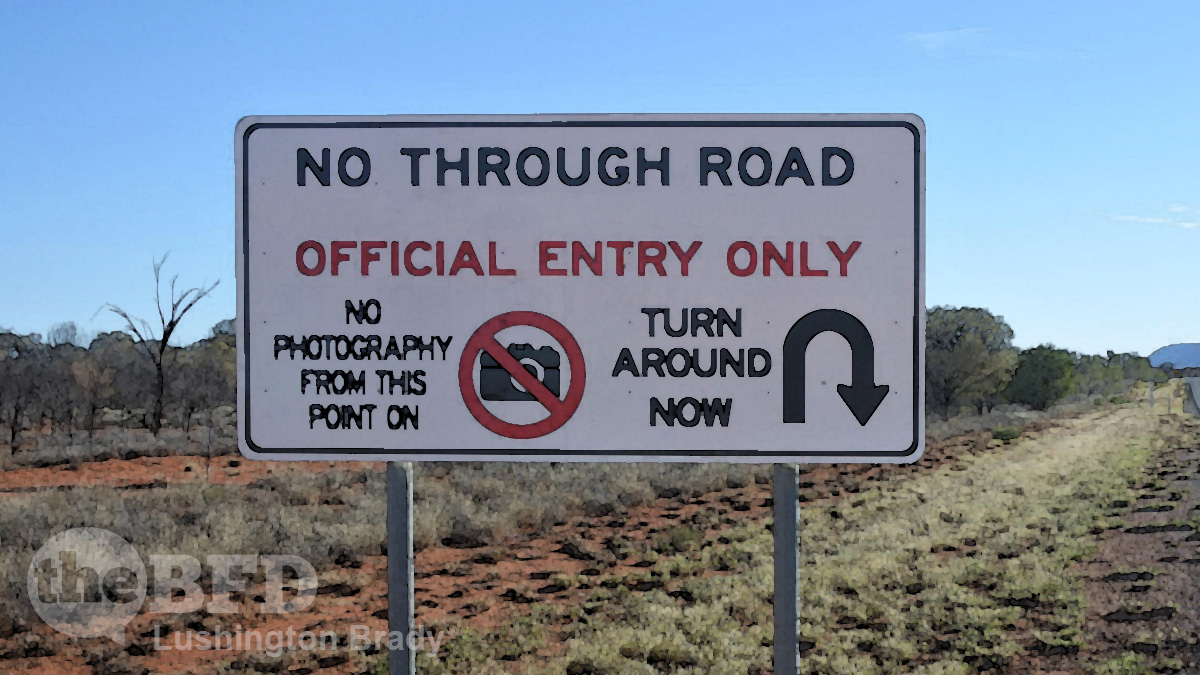For Australians, imprisoned within their own borders, the entire world is a travel-restricted destination. Not since the fall of the Soviet Union have a people been so resolutely confined within their own borders.
But, should our Covid overlords ever miraculously allow us past our 60,000 km Checkpoint Charlie, there will still be plenty of places that remain off-limits. Here are some of the world’s most off-limits places.
Fort Knox

Fort Knox, Kentucky USA, has long been a by-word for impenetrable security. Fort Knox is, of course, the site of the United States Bullion Depository. Underneath the fortress-like building lies the gold vault which is lined with granite walls and further protected by a blast-proof 20-ton door. Plus, Depository members need to enter several combinations of numbers that are known only to them. All that’s if you’ve already got past the alarms, minefields, barbed razor wire, electric fences, cameras, armed guards and Apache helicopters.
But Fort Knox has held more than gold in the past. During WWII it not only housed the Declaration of Independence, the US Constitution and Magna Carta, it was also the repository for morphine and opium, used to manufacture painkillers.
In its history, it has been opened to the public only twice; once for the news media and the second time, for Congress in 1974.
Le Zone Rouge

France’s “Red Zone” is comprised of the remnants of some of the most fiercely-contested battlefields in WWI. The area is littered with so much unexploded ordnance, and so poisoned from everything from the leftovers of gas warfare to the mercury and arsenic used in artillery shells, that it is simply to dangerous to wander freely. Entire villages, such as Douaumont, near the slaughterhouse of Verdun, have been ruled off-limits.
It’s estimated that the cleanup will take centuries, if it ever is completed.
Ise Grand Shrine

Shinto is the native religion of Japan. Parts of all Shinto temples are restricted to priests and priestesses only — these are the innermost chambers which hold sacred objects representing the kami (or spirit) of the shrine. But the Ise Grand Shrine is a site so sacred that only priests and priestesses of the royal family are granted admission.
In Shinto tradition, the goddess of the sun, Amaterasu, took refuge in a cave. To lure her out, other deities hung a mirror from a tree near the cave. That mirror, the Sacred Mirror or Yata no Kagami, forms part of the imperial regalia — the Japanese royal family are said to be descended from Amaterasu.
In keeping with Shinto belief, the temple is destroyed and rebuilt every 20 years.
All the general public are allowed to see are its thatched roofs, peeking above a heavily-guarded fence.
Surtsey

If you were a schoolchild in the 60s and 70s, you almost certainly watched documentaries on Surtsey, the volcanic island which suddenly appeared off Iceland in 1963.
Named after the Norse god of fire, Surtsey is an object of intense scientific research. From a cataclysmic volcanic cone completely devoid of life, it has slowly evolved to an island rich in life. Plants, birds, seals and orcas now call Surtsey home. Scientists are determined to keep Surtsey in pristine condition as a living laboratory.
So, even if you were driven to tour an active volcano, unless you’re a privileged scientist, Surtsey is off-limits.
North Sentinel Island

Another island you’d be advised to avoid even if you were allowed there is North Sentinel Island, part of the Andaman Island archipelago in the Bay of Bengal.
The reason it’s best avoided is because its native inhabitants are decidedly not inclined to receive visitors. The Sentinelese are so implacably hostile to outsiders that virtually no contact has ever been made. After the 2004 Boxing Day tsunami, there were concerns whether the islanders had survived. When a helicopter crew flew over, though, they were greeted with showers of arrows. Conclusion: the islanders are alive and fighting fit as ever.
In more recent years, two illegal fishermen and a would-be Christian preacher have been killed by the islanders.
Ironically, the Indian government had decided in 1996 that, despite the obvious threat to the health of anyone who went near the place, the islanders health was threatened by interaction with outsiders and prohibited visiting the island.
Pine Gap

Finally, Australians don’t even need to leave our shores to find places they’re not allowed to go. There’s always Pine Gap, near Alice Springs.
That location, in practically the centre of Australia’s vast, desert landmass, is why Pine Gap is so valuable — and so secret.
Pine Gap is a critical component of the United State’s global military and intelligence communications network. With its computer complex and radomes, Pine Gap is able to control United States spy satellites as they pass over one-third of the globe which includes China, the Asian parts of Russia and the Middle East. Due to the area’s very remote location, spy ships passing in international waters are unable to intercept the signal.
The station is a joint Australian-US facility which employs over 800 people — as well as giving hippies with too much time on their hands somewhere to go and stage occasional protests at the extensive wire fences.
Please share this article so that others can discover The BFD

